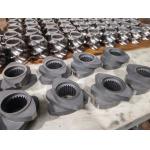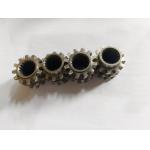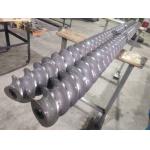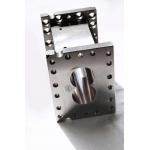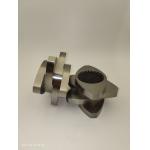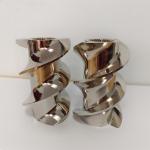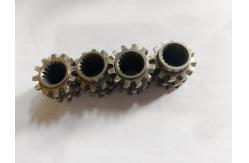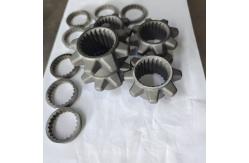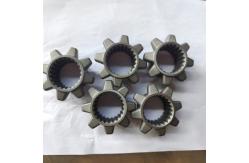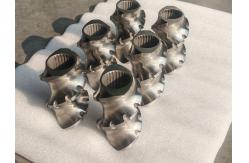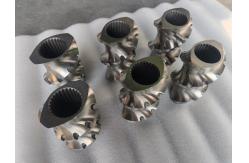The screw element is an important component in a screw extruder.
The following will provide a detailed introduction from the
dimensions of its classification, function, characteristic
parameters, etc. Classification
Classification by Function
Conveying Elements: They are divided into forward conveying screw
elements and reverse conveying screw elements. The forward screw
elements have the same direction as the extrusion direction and are
mainly responsible for conveying the material along the extrusion
direction; the reverse screw elements, on the contrary, hinder the
forward conveying of the material, which can extend the residence
time of the material in the barrel, increase the filling degree and
material pressure, and promote the mixing effect.
Shearing Elements: Mainly refer to kneading blocks, which are
usually used in pairs or in series. There is an offset angle
between adjacent kneading blocks, known as the stagger angle. Their
function is to provide a high shearing force and have the ability
to distribute and disperse the mixture, promoting the mixing and
exchange of materials along the axis of the screw elements.
Mixing Elements: Generally refer to toothed elements, including
straight teeth and helical teeth. The groove structure of the
toothed elements can connect adjacent screw channels, promoting the
mixing effect between materials, ultimately achieving melt
homogenization and promoting longitudinal mixing of materials. At
the same time, they can also generate a shearing force
perpendicular to the flow direction on the material flow.
Classification by Structure
Single-Head Screw Elements: When the thickness is large, they can
minimize material leakage. They have a smaller capacity than
double-head screws but have the highest conveying efficiency.
Double-Head Screw Elements: They are the conventional conveying
elements in co-rotating twin-screw extruders. They have less
shearing force than three-head elements and are used for solid
feeding, melt conveying, venting, and melt conveying. They have
uniform heating and good self-cleaning performance.
Three-Head Screw Elements: They have higher shearing force and are
mainly used for melting, dispersion, and mixing. They can make the
pressure and temperature distribution of the material in the barrel
more flexible and have a good exhaust and volatilization effect,
but the output is lower.
